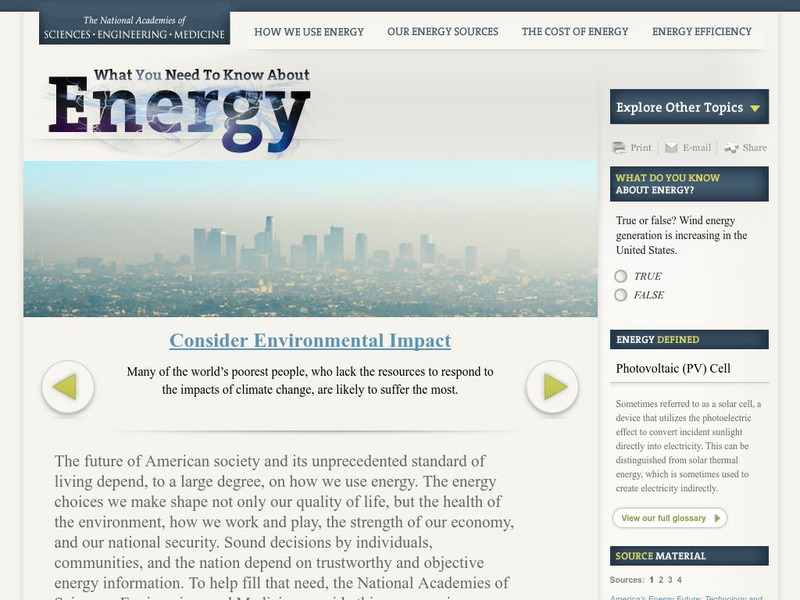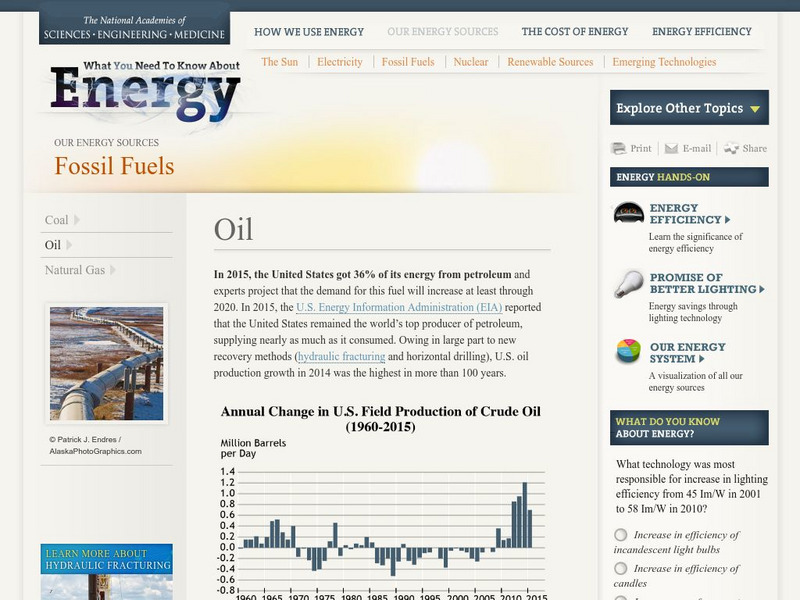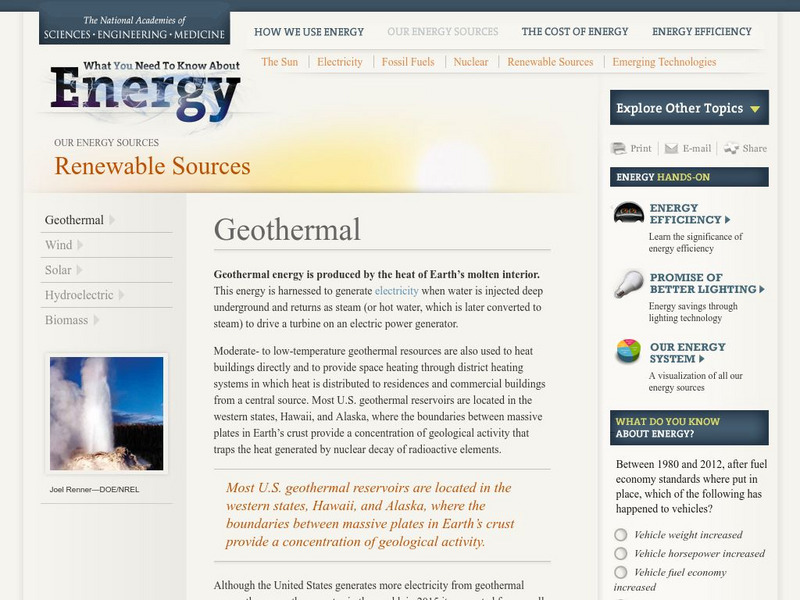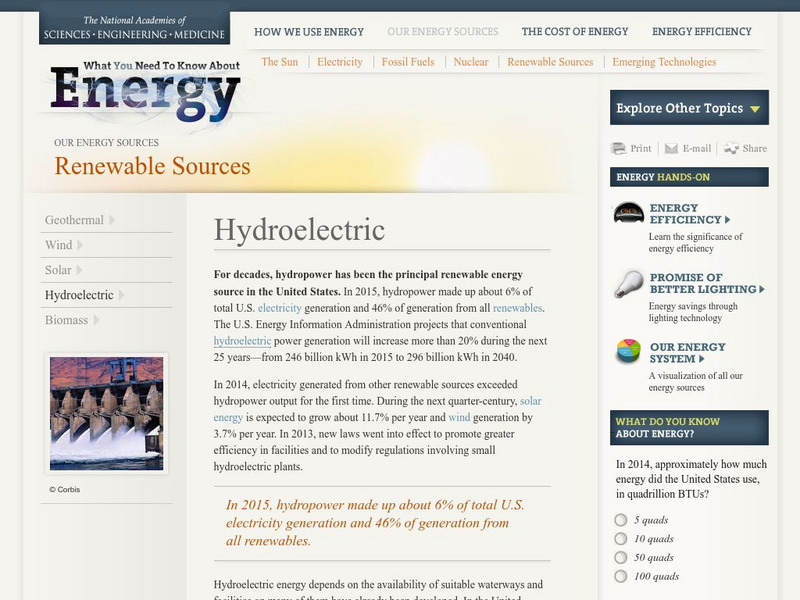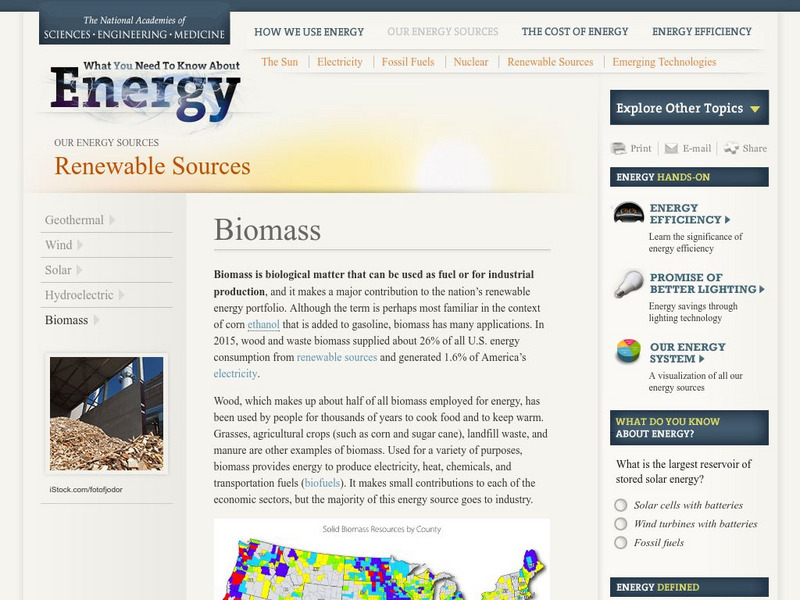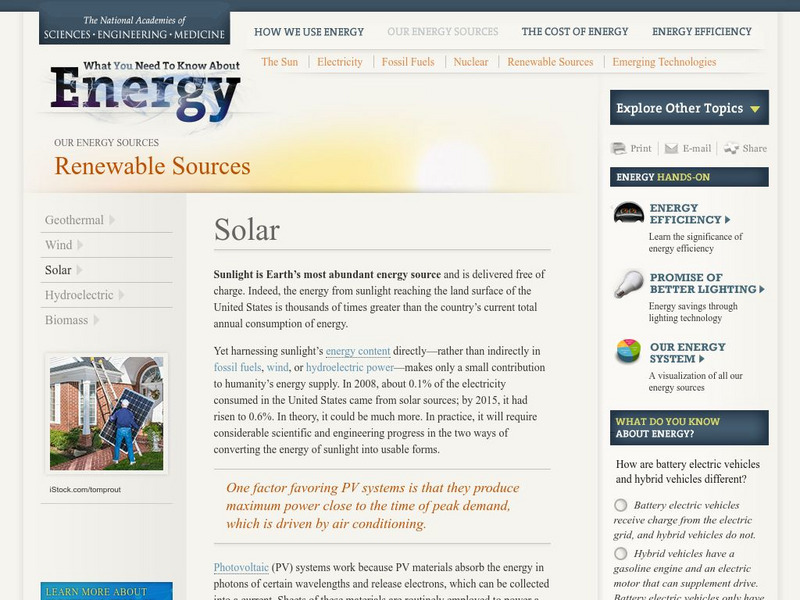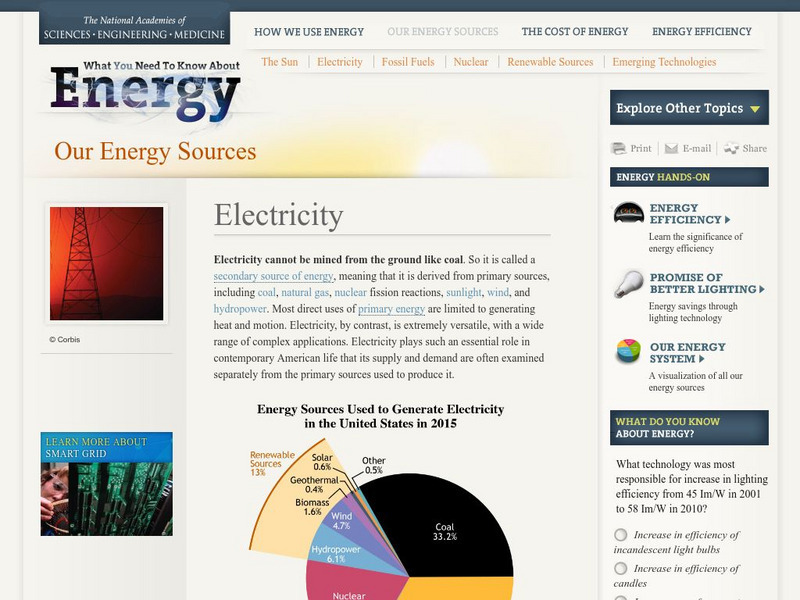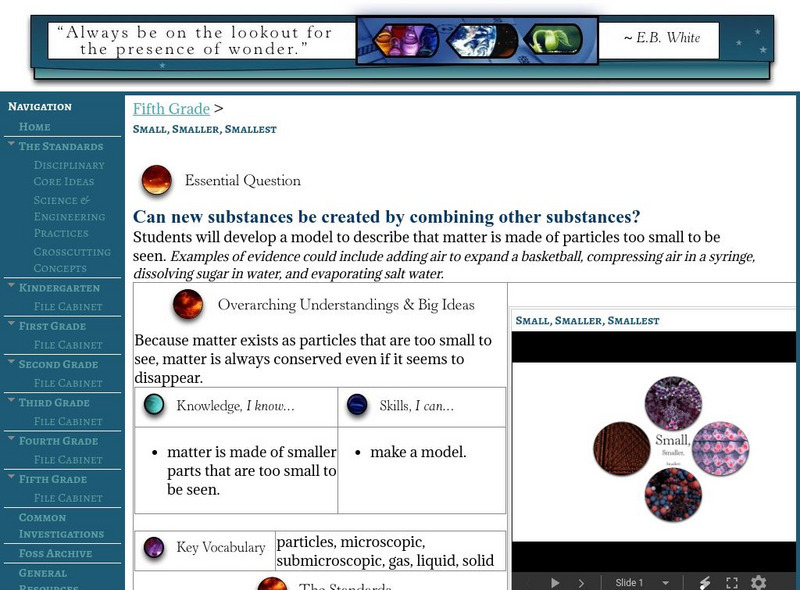National Academies of Sciences, Engineering, and Medicine
The National Academies: Energy Efficiency
Reducing energy use is critically important to our future. This objective has been successfully met through many initiatives, such as improved appliance design, public education and streamlining procedures in industry. Some past...
National Academies of Sciences, Engineering, and Medicine
The National Academies: Our Energy System
This interactive presents the many sources of energy in the United States, showing in a flow chart how much of each type of energy is used. Pop-up windows provide more information at the different branches in the chart.
National Academies of Sciences, Engineering, and Medicine
The National Academies: Our Energy Sources
The many sources of energy production in the United States are described in this overview. Included are traditional sources, renewable sources, and new energy production technologies.
National Academies of Sciences, Engineering, and Medicine
The National Academies: What You Need to Know About Energy
This very comprehensive site aims to provide the latest, most accurate information available about energy, its consumption, sources of energy, alternative energy, impact on the environment, and conservation. One section focuses on the...
National Academies of Sciences, Engineering, and Medicine
The National Academies: Understanding Efficiency
This interactive activity from the The National Academies of Sciences examines the ways that improved energy efficiency can be achieved at home and on the road. Compare technology in both settings, and understand their energy...
National Academies of Sciences, Engineering, and Medicine
The National Academies: How We Use Energy
The main categories of our energy use - home, work, transportation and industry - are examined to see how much energy we are using and what can be predicted about our use in the furture.
National Academies of Sciences, Engineering, and Medicine
The National Academies: Our Energy Sources: Natural Gas
Energy production from natural gas is less destructive to the environment than energy produced from coal, but it is still produced from fossil fuels. While advances have been made in reducing its detrimental effects, our resources are...
National Academies of Sciences, Engineering, and Medicine
The National Academies: Our Energy Sources: Oil
The United States has a huge dependency on oil as an energy source. Efforts are being made to reduce this for many reasons, the main ones being the security of this source and the impact on the environment. Transportation is one area...
National Academies of Sciences, Engineering, and Medicine
The National Academies: Renewable Sources: Geothermal
Geothermal energy is being used today on a small scale but is an appealing alternative to other sources of energy as it has little impact on the environment. This source of energy and how we are harnessing it are described here.
National Academies of Sciences, Engineering, and Medicine
The National Academies: Renewable Sources: Hydroelectric
Hydroelectric power has been a major source of energy production in the United States. More recently, other alternative energy sources have taken some of its market share. Hydroelectricity has both advantages and disadvantages, briefly...
National Academies of Sciences, Engineering, and Medicine
The National Academies: Renewable Sources: Biomass
The pros and cons of harnessing energy from biomass are outlined. Biomass refers to biological materials that are used to produce energy. Wood and manure are examples of biomass.
National Academies of Sciences, Engineering, and Medicine
The National Academies: Renewable Sources: Wind
The status of wind energy production in the United States is described, with the advantages and disadvantages of this alternative energy source.
National Academies of Sciences, Engineering, and Medicine
The National Academies: Emerging Technologies: Hydrogen Fuel Cells
The advantages and disadvantages of hydrogen fuel cell technology as a source for energy production are outlined. There is still much to be done in research and development before this energy source can be marketed widely.
National Academies of Sciences, Engineering, and Medicine
The National Academies: Emerging Technologies: Biofuels
Biofuels are made from organic materials such as corn and algae, as well as sugars and starches from plant cellulose. They have advantages such as sustainability and lowered greenhouse gas production, but they can impact on the...
National Academies of Sciences, Engineering, and Medicine
The National Academies: Our Energy Sources: Nuclear Energy
Nuclear fission energy accounts for a large portion of energy production worldwide. New plants will use improved technologies. There is also research underway to explore how to harness the energy produced from nuclear fusion, but this...
National Academies of Sciences, Engineering, and Medicine
The National Academies: Renewable Sources: Solar
Solar energy is an appealing alternative to conventional sources of energy because it produces no greenhouse gases. An overview of its advantages and disadvantages is presented here.
National Academies of Sciences, Engineering, and Medicine
The National Academies: Energy Glossary
Some of the many complex terms used in discussing energy are defined in this glossary.
National Academies of Sciences, Engineering, and Medicine
The National Academies: Our Energy Sources: Fossil Fuels
An overview of fossil fuels used in the United States. Coal, oil and natural gas are listed with information about each energy source.
National Academies of Sciences, Engineering, and Medicine
The National Academies: What You Need to Know About Energy
A web page full of information about energy uses, energy sources, energy costs, and efficiency.
National Academies of Sciences, Engineering, and Medicine
The National Academies: Our Energy Sources: Electricity
Electricity is considered a secondary energy source because it is generated from other sources such as water and wind. Learn about electricity demand in the U.S. as well as the challenges we face in the future to continue to provide...
National Academies of Sciences, Engineering, and Medicine
The National Academies: Emerging Technologies: Advanced Nuclear Fission
A brief explanation of the advances being made in the design of nuclear power facilities.
National Academies of Sciences, Engineering, and Medicine
The National Academies: Emerging Technologies: Electric Vehicles
Electric vehicles are in use today but pose challenges to widespread distribution. One of the challenges is to develop a battery that can hold enough energy for longer trips. Various solutions are being tried but mass marketing of this...
National Academies of Sciences, Engineering, and Medicine
The National Academies: Emerging Technologies: Advanced Coal Technologies
Coal is still widely used in energy production but is responsible for a third of the carbon dioxide emissions in the United States. New technologies, described here, are being developed to reduce or eliminate these emissions.
National Academies of Sciences, Engineering, and Medicine
National Academies Press: Small, Smaller, Smallest
View these slides to better understand that matter is made of smaller parts that are too small to be seen. These slides can be used to meet math, science, and literacy standards.



